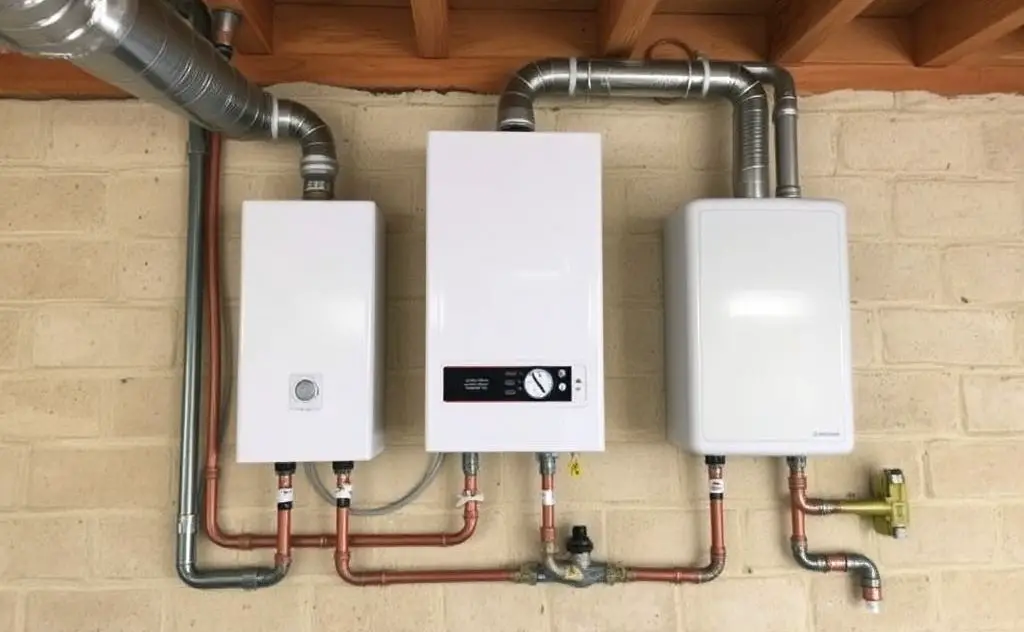Using an existing vent for a tankless water heater is generally not recommended unless it is specifically designed for that purpose, as tankless units require proper venting to ensure safety and efficiency, often needing a direct vent system or specific materials like PVC or stainless steel.
Many homeowners upgrading to tankless water heaters wonder if they can save money by reusing their existing venting system. While it may seem like a simple way to cut costs, vent compatibility is critical for safety and performance. This guide explains when existing vents can be reused and when new venting is required.

Why Proper Venting Matters for Tankless Units
Tankless water heaters require different venting than traditional tank heaters. Gas models produce exhaust gases that must be safely vented outside. Electric models don’t need venting since they don’t burn fuel.
Improper venting can cause:
- Carbon monoxide buildup in your home
- Reduced heater efficiency
- Premature system failure
- Voided manufacturer warranties
Venting Requirements for Gas Tankless Heaters
Gas tankless water heaters have strict venting requirements that differ from traditional tank heaters:
| Requirement | Traditional Tank Heater | Tankless Heater |
|---|---|---|
| Vent Material | Galvanized steel | Stainless steel or PVC |
| Vent Size | 3-4 inches | 4-6 inches |
| Exhaust Temperature | 300-400°F | 100-300°F |

Types of Tankless Water Heater Venting
Power Vent Systems
These use indoor air for combustion and require one exhaust vent. They need adequate space for proper air supply. Power vents work well for larger installations where space isn’t limited.
Direct Vent Systems
Direct vents have two pipes – one for intake air and one for exhaust. They can be installed in tight spaces like closets. Vented gas heaters use similar technology for safe operation.
Concentric Vent Systems
These combine intake and exhaust in one pipe. The inner pipe exhausts gases while the outer pipe brings in fresh air. Concentric vents are safer and more compact than other options.
Can You Reuse Existing Vents?
In most cases, existing vents cannot be reused for these reasons:
Material Incompatibility
Traditional vents use galvanized steel that corrodes quickly with tankless exhaust. Tankless units require stainless steel or special PVC piping that resists acidic condensate.
Size Differences
Tankless heaters need larger diameter vents (4-6 inches) compared to traditional heaters (3-4 inches). Undersized vents restrict airflow and reduce efficiency.
Vent Configuration
Tankless units often need different vent layouts. Some require horizontal venting instead of vertical, or different termination points outside the home.
When Reuse Might Be Possible
In rare cases, you might reuse part of an existing vent system if:
- The vent material is already stainless steel
- The diameter meets tankless requirements
- The layout matches the new heater’s needs
Always consult the manufacturer’s specifications before attempting to reuse any vent components. Understanding vent types helps determine what will work for your installation.
Professional Installation Recommendations
Due to the complexity of tankless venting, professional installation is strongly recommended. A qualified technician will:
- Assess your current vent system
- Determine if any components can be reused
- Install proper venting materials
- Ensure all safety codes are met
- Test for proper operation
According to plumbing experts, improper venting is one of the most common installation mistakes with tankless water heaters.
Alternative Venting Solutions
If running new venting is challenging, consider these options:
Electric Tankless Heaters
Electric models don’t require venting, making them easier to install. However, they may need electrical system upgrades.
Outdoor Installation
Some tankless models are designed for outdoor installation, eliminating the need for venting through walls or roofs.
Condensing Units
Condensing tankless heaters can use PVC venting, which is often easier to install than metal vents. They’re also more energy efficient.
For those considering other heating options, propane tankless heaters offer an alternative to natural gas models.
Cost Considerations
While new venting adds to installation costs, it’s a necessary investment for:
- Safety – prevents carbon monoxide risks
- Performance – ensures proper operation
- Warranty – most manufacturers require proper venting
Venting costs vary based on:
- Vent material (stainless steel vs PVC)
- Vent length and routing complexity
- Local labor rates
As noted in HVAC forums, cutting corners on venting often leads to more expensive problems later.
